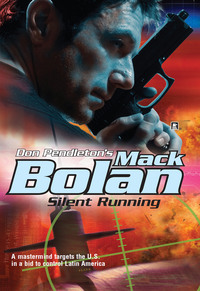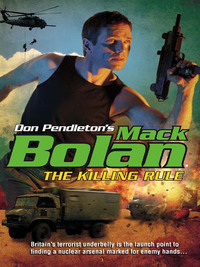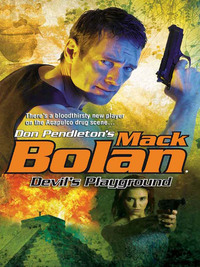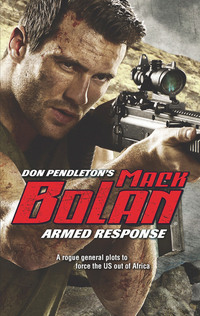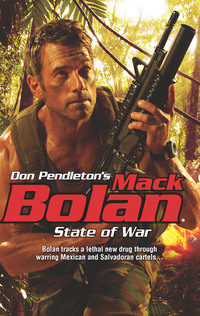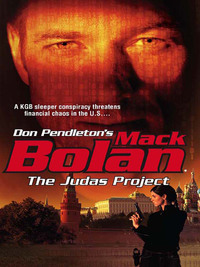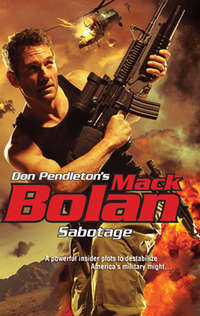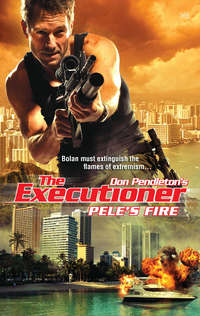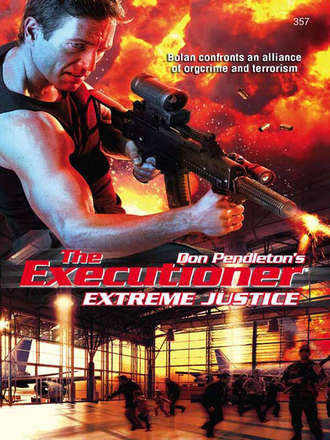
Полная версия
Extreme Justice

“Here they come!”
Blanca Herrera advised Bolan, as if she thought he might be unaware of the pursuit.
“I see them,” he replied. “Hang on.”
Almost before she could react to his warning, they cleared the alley and he cranked the Ford into the sharpest left-hand turn he could manage, startling a pair of jaywalkers who squealed and ran for safety on the sidewalk. Gunfire echoed from the alley at his back, even before the first chase car emerged. The pedestrians went prone.
Bolan was making all the haste he dared on residential streets, watching the sidelines where his own headlights and those closing behind him cast distorted, moving shadows. Any one of them might mask another late-night rambler, possibly a child, and Bolan had to balance that thought with the threat of death that rode his bumper. At the same time, if he drove too fast and lost control, smashed up the Ford, he and his passengers were facing sudden death, and the failure of his mission.
“Could you distract them for me?” he asked Herrera.
“How?”
“Shoot back!” the Executioner said.
Extreme Justice
The Executioner®
Don Pendleton

www.mirabooks.co.uk
Special thanks and acknowledgment to Michael Newton for his contribution to this work.
All evils are equal when they are extreme.
—Pierre Corneille,
1606–1684
Horace
Sometimes we have to match evil with evil. It’s a fact, and I’m prepared to pay the toll.
—Mack Bolan
THE MACK BOLAN LEGEND
Nothing less than a war could have fashioned the destiny of the man called Mack Bolan. Bolan earned the Executioner title in the jungle hell of Vietnam.
But this soldier also wore another name—Sergeant Mercy. He was so tagged because of the compassion he showed to wounded comrades-in-arms and Vietnamese civilians.
Mack Bolan’s second tour of duty ended prematurely when he was given emergency leave to return home and bury his family, victims of the Mob. Then he declared a one-man war against the Mafia.
He confronted the Families head-on from coast to coast, and soon a hope of victory began to appear. But Bolan had broken society’s every rule. That same society started gunning for this elusive warrior—to no avail.
So Bolan was offered amnesty to work within the system against terrorism. This time, as an employee of Uncle Sam, Bolan became Colonel John Phoenix. With a command center at Stony Man Farm in Virginia, he and his new allies—Able Team and Phoenix Force—waged relentless war on a new adversary: the KGB.
But when his one true love, April Rose, died at the hands of the Soviet terror machine, Bolan severed all ties with Establishment authority.
Now, after a lengthy lone-wolf struggle and much soul-searching, the Executioner has agreed to enter an “arm’s-length” alliance with his government once more, reserving the right to pursue personal missions in his Everlasting War.
Contents
Prologue
Chapter 1
Chapter 2
Chapter 3
Chapter 4
Chapter 5
Chapter 6
Chapter 7
Chapter 8
Chapter 9
Chapter 10
Chapter 11
Chapter 12
Chapter 13
Chapter 14
Epilogue
Prologue
Crooked Island, Florida
June 14
Armand Casale rose from the midnight surf, water streaming from the neoprene wet suit that covered his athletic body like a second skin. He spit out the mouthpiece of his scuba breathing apparatus and reached back with his left hand to interrupt the flow of oxygen. Leaving his face mask snug in place to spare his eyes from dripping saltwater, Casale shed his swim fins, hooked them to his belt and crossed the narrow strip of moonlit beach with long, determined strides.
He couldn’t help the moon, but a mad sprint across pale sand to reach the tree line would only invite the notice of the guards.
When he reached the trees without a siren going off or shouting men rushing out to cover him with automatic weapons, Casale reckoned he was halfway home. The hardest bit was still ahead, of course, but other members of his team had worried that he wouldn’t even survive the trip ashore.
Casale knew what he was doing. That was why he’d come alone, against the odds, instead of dragging half a dozen shooters with him like some kind of ragtag army launching an amphibious invasion.
Done right, it was a one-man job.
And if he failed, why take the others down with him?
His target lay a hundred yards inland. The small two-bedroom house would’ve sold for seven figures if it had been offered for sale. A buyer would’ve paid not only for the proximity to the ocean but also for the isolation, which was rare indeed wherever sand met surf around the Sunshine State.
The property was not for sale, however. Hadn’t been since Uncle Sam had snapped it up during World War II for naval exercises. More recently, the Justice Department maintained the property and used it as an outpost of the WITSEC program.
Witness Security, that was.
Casale didn’t know how much his boss had paid for information regarding the location of the Crooked Island safehouse, and he didn’t care. He had his orders, and he meant to execute the plan without a hitch.
Four guards, at least, and one primary target. Casale was authorized to kill them all, if necessary, and to hell with any heat resulting from the deaths of federal agents.
It was perfect.
Casale wasn’t sure exactly how his adversaries would be armed. The Smith & Wesson .40-caliber had been standard issue for the FBI since 1990-something. Shotguns were more than likely, though Casale couldn’t rule out lightweight automatic weapons.
Never mind.
Casale was prepared for anything. In lieu of backup, he was carrying a Spectre submachine gun and accessories inside an airtight plastic bag. The weapon measured only fourteen inches with its shoulder stock retracted, twenty-two if he attached the fat suppressor to its threaded muzzle. Fifty-round four-column magazines gave the Spectre an ammo capacity surpassing any other SMG, while its cyclic rate of 850 rounds per minute bested even the classic Heckler & Koch MP-5.
The Spectre was Casale’s last resort, however. He would hold it in reserve, in case the plan started to fall apart.
His two primary weapons were a customized Walther P-38 pistol, also fitted with a suppressor and hand-loaded subsonic rounds, and a brand-new toy that dangled in a scabbard on Casale’s belt.
He had only used the WASP injector knife once before on a human being—call it a field test—and the results had been dramatic. The WASP carried a 12-gram cartridge of CO2 gas inside its handle, triggered at the touch of a button through a tube in its 5.5-inch blade of razor-edged surgical steel. Upon release, forty cubic inches of gas were injected into the target’s flesh at minus sixty degrees Fahrenheit, expanding to basketball size and instantly freezing soft tissue on contact.
The WASP was created as a self-defense weapon for divers confronted by sharks. Injection of the freezing gas not only killed the shark, but also caused it to rise at dangerous speed, bursting open as it reached the surface and distracting other predators while the diver escaped, forgotten.
The knife retailed for six hundred dollars, but Casale’s hadn’t cost him anything. One of Don Romano’s thieves had stolen a case of them back in July, and Casale had appropriated two for himself, with enough gas cartridges to see him through a busy year. He had tried his new toy on a homeless man in San Francisco, two weeks earlier. Police were still puzzling over the case, while tabloid journalists beat the bushes for satanic cultists or black-market-organ harvesters.
After this night, the FBI would have a better handle on the mystery, but what of it? They might know how, and even why, but it would be a stone bitch learning who.
Casale slipped on the running shoes that he had carried in another plastic bag. He wasn’t taking any chances with a seashell or a piece of glass that might leave blood drops for the Bureau lab rats. No one had his DNA on file so far, but why risk injury and help his enemies at the same time?
A gliding shadow in the wind-swept night, Casale slowly approached the target, taking one step at a time.
Hyder, Arizona
June 14
HAROUN AL-RACHID SUPPOSED the small town’s name was meant to be a joke. Why else would agents of the U.S. government attempt to hide one of their most important turncoat witnesses in a community called Hyder?
It was the very sort of arrogance that most disgusted him about Americans, the smug conviction that they were superior in every way. Even their sense of humor was crude and tasteless, heavily dependent on insults directed toward nonwhite minorities or females.
Since bin Laden had surprised the Americans in 2001, Muslims had become targets of American humor. Al-Rachid understood the impulse—in truth, one of his own favorite jokes involved an American missionary and a priapic camel—but he still believed that the Great Satan needed to learn more humility.
This night, in his own small way, he was happy to help.
The desert outside Hyder, Arizona, bore no visible resemblance to that of his Saudi homeland. It lacked the massive, ever-changing dunes of perfect, almost silken, sun-baked sand. Instead, it was a place of grit and gravel, hard soil creased and creviced like an ancient reptile’s skin. It sprouted cacti, Joshua trees, mesquite and tumbleweeds, those prickly, erratic travelers that still made al-Rachid’s driver flinch each time once bounced across the two-lane road in front of them.
“Be careful,” al-Rachid ordered. “The police are everywhere.”
The driver acknowledged his order in Arabic, keeping his eyes on the highway revealed by their headlights.
In fact, except for those he’d come to kill, al-Rachid doubted that he would find another lawman in the area this evening. There was a one-man sheriff’s substation in Hyder, and the district had its own highway patrolman, but al-Rachid had been assured that the sheriff’s deputy went home at 6:00 p.m., except in cases of emergency, while the patrolman—called a state trooper—supervised four hundred miles of rural highway during his eight-hour shift. The odds against encountering him accidentally at any given place or time were higher than al-Rachid himself could calculate.
Upon arrival at their destination, it would be a different story. Al-Rachid and his two companions had been sent to kill one man, but he was guarded by at least four others, armed and trained.
No problem.
FBI agents—and all American police, in fact—were taught to save lives first and kill only in the utmost extremity. Nothing in their experience prepared them to match wits with dedicated warriors fielded by the Sword of Allah.
They would learn that lesson this night, to their ultimate sorrow.
Al-Rachid used a penlight to review the road map folded in his lap. He had the turnoff clearly marked, a thick black arrow pointing from the narrow highway to the right, or east.
“One mile,” he told the driver. Turning toward the soldier in the backseat, he commanded, “Goggles.”
Without answering, the man reached into a duffel bag on the seat beside him, drawing out two pairs of night-vision goggles. Al-Rachid took them both, placed one atop his map and held the other ready as his driver neared the access road that led to their intended target.
“Now,” al-Rachid announced. The driver switched his headlights off, turned slowly off the highway to his right and stopped a few yards down the unpaved road. Brake lights glowed ruby-red behind them, but al-Rachid could not prevent it, simply offering a prayer that his enemies were less than vigilant.
He passed a pair of bulky goggles to the driver, then put on his own, adjusting the head straps until the weight was fairly balanced. Every time he wore night-vision gear for any length of time, al-Rachid wound up with aching muscles in his neck and shoulders, but it was a minor price to pay under the circumstances.
Victory was now within his grasp.
He swiveled in his seat, confirming that the backseat gunner had his goggles on, the AR-18 folding-stock assault rifle held ready in his hands. Two more identical weapons lay on the floor at al-Rachid’s feet.
Given a choice, he would have picked Kalashnikovs, but in the present circumstances Armalites had been the best rifles available. They chambered 5.56 mm NATO rounds, slightly larger than the AK-74’s standard 5.45 mm Soviet cartridge, but the difference in practiced hands was minimal, and the Armalite’s larger 40-round magazine gave the weapons superior firepower.
Loaded with armor-piercing rounds, as these were, the rifles should defeat any Kevlar or similar protective apparel worn by the target or his bodyguards. In fact, the slugs should slice through body armor like a heated knife through cheese.
“Three-quarters of a mile,” al-Rachid reminded his wheelman. The driver knew that, but reminders did no harm, and there was no objection. As they drove along the unpaved access road, raising a plume of dust concealed by midnight darkness, al-Rachid dropped his map and lifted the twin rifles from the car’s floorboard.
They dared not drive directly to the house itself. Even with the headlights off, that would alert the guards and destroy their advantage of surprise. Al-Rachid would stop his driver halfway to the desert bungalow, then proceed on foot across the arid landscape to their goal.
With luck, he hoped to catch the target and at least one of his bodyguards asleep. The agents had to sleep and eat in shifts, with two or three of them remaining on alert around the clock.
But how alert?
Al-Rachid smiled as the car slowed, coasting to a halt.
A few more moments, and he would find out.
Crooked Island, Florida
ARMAND CASALE MET the first guard when he was still fifty yards from the house. He was surprised to find the middle-aged FBI agent at large after midnight, prowling the grounds while a chill breeze blew in from the gulf, but Casale supposed that even G-men got bored sometimes.
The agent had a riot-model shotgun, but he carried it in one hand, dangling beside his leg, its muzzle pointed toward the earth. Even if it was cocked, to fire the weapon Casale’s enemy would have to shift his hold, relocate his right hand to clutch the pistol grip and let his index finger slip inside the trigger guard.
Casale didn’t plan to give him time for that.
He crouched in shadow, perfectly immobile, scarcely breathing, as the roving sentry passed his hiding place. Casale saw the Kevlar vest his adversary wore, without a jacket to conceal it, and it didn’t worry him.
Ironically, while varied thicknesses of Kevlar could deflect most small-arms fire, they offered no significant protection against blades.
Casale gave his target three last strides, then rose from hiding, rushed upon him from behind and clamped his left hand tight against the agent’s mouth. His right hand drove the WASP’s blade through the Kevlar vest, which offered no more physical resistance than a heavy overcoat.
At once, Casale triggered the release of freezing CO2 into the G-man’s body cavity. The icy gas expanded instantly, traumatically displacing heart and lungs and arresting their performance in the time it took Casale to withdraw his blade. The dead man bucked and quivered in Casale’s grasp, then suddenly went limp and slumped facedown in the sand.
Casale reloaded the WASP, replacing its spent cartridge with a fresh one, then moved on. So far, his mission was on schedule, going off without a hitch.
He met no other lookouts between the killzone and the house. Approaching through the darkness, he saw lighted windows with their curtains drawn against the night, a television flickering from one room where the other lights had been extinguished.
No one saw Casale draw his silenced pistol from its plastic bag. No cameras scanned the house or yard, an oversight that would rebound against someone in Washington the next day, when the night’s news broke. Armand Casale circled the safehouse clockwise, searching curtained windows for a gap that would permit a glimpse inside.
He returned to his starting point without a break.
If nothing else, the FBI was good with drapes.
Casale didn’t know the walking sentry’s schedule, but he guessed that thirty minutes would be stretching it. How long had the G-man been prowling when they met? It was impossible to say.
Impossible, as well, for him to guess the knocks or other recognition signals that had been arranged between the agents guarding his primary target. Locating the safehouse had been difficult enough, and costly, but his sponsor didn’t have the juice to penetrate the local FBI itself and pick its brains.
No matter. Casale would make his way inside the house by any means required.
First he would try the doors.
They should be locked, of course. Locking the doors and windows was the most basic of all security precautions. Still, even the best-trained sentries sometimes made mistakes, and if the agents in the house expected their companion to return shortly…
Casale tried the back door first, considering it the more likely choice of sentries going out to search the woods and dunes. Like many seaside homes, the safehouse’s front door faced inland, while its back door and rear windows faced the sea.
Casale curled gloved fingers around the knob and tested it.
It turned.
Casale held his breath, expecting shrill alarms, a shouted warning, even gunfire.
Nothing happened.
Following the Walther’s lead, he stepped into a well-lit but empty kitchen.
He crossed the room, stepped into a darker corridor that branched left and right. The television sounds came from his left, presumably one of the bedrooms. Turning to his right, he followed the drone of voices speaking quietly but with no apparent effort at concealment.
Midnight was a quiet time, and Death was near.
Casale stepped into what would’ve been the living room and found two agents sprawled in easy chairs, debating some fine point of the derivative team sport Americans called football. One G-man faced the doorway where Casale stood; the other had his back turned toward his assassin.
The first man lurched forward, reaching for his gun. The sudden forward motion brought his face to meet Casale’s silent slug. Casale barely registered the splat of blood and brain against the chair’s upholstery.
He fired again before the second man could rise and turn, his neck and torso twisted as he tried to draw his pistol, strained to glimpse his enemy.
Too late.
The second bullet drilled his temple and kept going, spilling any final thoughts across the cheap rust-colored carpet. When he fell, the impact of his body was a solid, final sound.
Two left.
Casale doubled back along the hallway, slightly worried that some noise might have alerted the safehouse survivors. He tried the first bedroom and caught the last G-man asleep, blinking defensively against the spill of light before a bullet sent him to dreamland forever.
That left one.
Casale knew his primary target wouldn’t have a weapon. That was strictly, fatally forbidden by the WITSEC code. Only the guardians were armed, trusted to sacrifice themselves on the behalf of those they were assigned to watch.
Now, with the sacrifice complete, the target was defenseless.
He half expected that the last door would be locked, some vestige of a challenge for his effort, but the knob turned easily. Casale stepped across the threshold, recognized his target instantly from photos he had memorized.
The man lay on his back in bed. At the intrusion, he sat up.
“Vincent Onofre,” Casale said. Not a question, simply making sure.
The target’s mouth sagged open. “Who the hell are you?”
“Friend of a friend,” Casale said, and shot the traitor twice. One bullet through the forehead, and another through the temple as he slumped back dead, against his stack of pillows.
Done.
It was a good night’s work, with one last swim ahead of him before Casale made for home.
Hyder, Arizona
THREE MEN COULD NOT surround a house, per se, but they could cover it sufficiently by staking out three corners of the building. Each shooter thus had unobstructed views of two sides, cutting off any attempt by occupants to flee unseen.
Haroun al-Rachid claimed the northeast corner for himself, watching the north—or front—and east sides of the safehouse. Umarah, his driver, had the southeast corner, covering the east and south sides, while Tabari—on the southwest corner—watched the west and south.
Perfect.
Two lights were burning in the safehouse. One gleamed dully through a smallish frosted pane that had to have been the bathroom window, while another shone through crooked drapes and offered sliver glimpses of the kitchen. There were no signs of movement, but al-Rachid assumed that one or two guards had to still be awake.
His plan lacked subtlety, but had the virtue of surprise and overwhelming force. He would not give his enemies a chance to fight or run. Alert or dreaming, they were bound to die.
Besides the Armalite AR-18s, al-Rachid’s small arsenal included three LAW rockets, disposable bazookas featuring a lightweight plastic launching tube that held a 66 mm armor-piercing rocket with a high-explosive payload in its nose. Deemed obsolete against most modern tanks, the rockets still served well enough against civilian vehicles and homes.
As in the present case.
Al-Rachid’s companions had been trained to use the LAWs, advised that they would each have one shot only and had to make it count. Thermite grenades would follow the initial blasts, and they would stay to watch the house burn to its foundation, greeting any stunned survivors with their Armalites.
Al-Rachid released his launcher’s safety pin and drew it out to full length, balanced it across his shoulder as he aimed. The AR-18 rifle lay beside his right foot, in the sand, with the white-phosphorus grenade.
He armed the LAW, sighted on the window he had chosen for his target, six feet to the left of the front door, and pressed the trigger. Simultaneously, his two men released their rockets, warheads speeding toward the house with tails of fire.
Glass offered no significant resistance to the rockets. They were set to detonate on impact only with a solid wall, inside the house, where their explosive power would demolish timber, plaster, furniture and flesh.
The rockets detonated like a string of giant firecrackers, expelling smoke and shrapnel from their points of entry. Other windows of the safehouse shattered, front and back doors trembling in their frames but holding fast.
So far.
Before the echoes of the triple blast had time to fade, al-Rachid had palmed his Thermite canister, armed it, stepped closer to the stricken house and pitched it through the aperture where flames were visible already, spreading, feeding on the rubble, generating toxic smoke.
After the rockets, the grenades were relatively quiet. They made muffled whumping sounds inside the house, immediately spewing white-hot chemicals that would incinerate on contact virtually any man-made substance. Thermite would burn through tempered steel and concrete. Flesh and bone were nothing, in the scheme of things.


